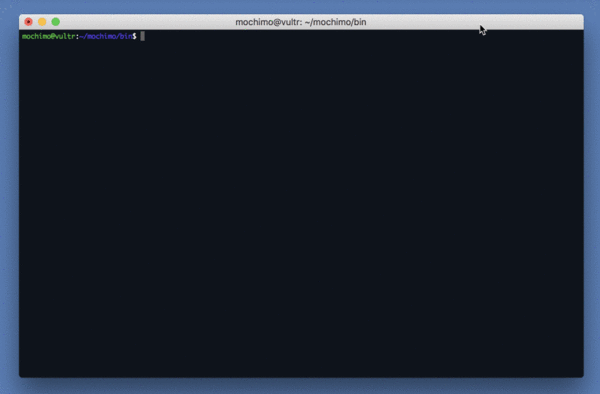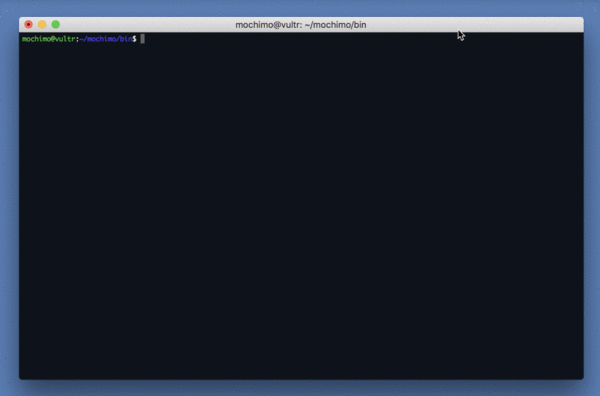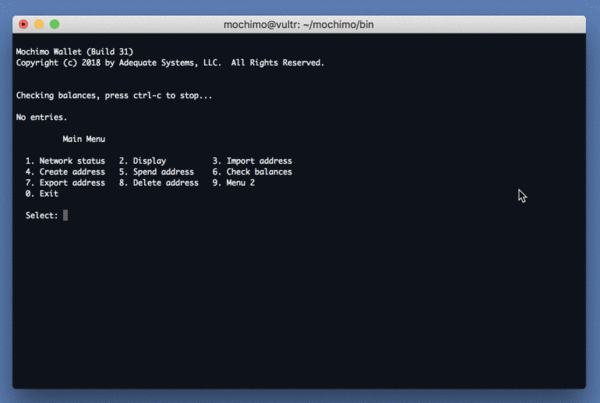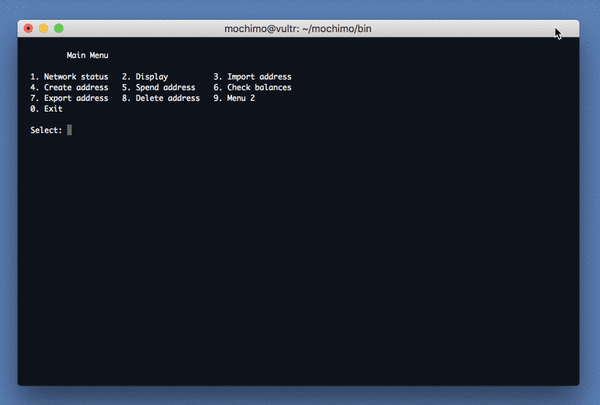Difference between revisions of "Mining rig build guide (September 2018)"
(→Getting started) |
(→Parts Needed) |
||
| Line 7: | Line 7: | ||
The recommended setup for MCM is very entry level. You can actually purchase very low end parts, old parts, or even used parts to get started and expand from there. For this build I tried to purchase everything from Amazon and with a budget of $350. Everything is brand new but you can often find many deals on used parts or just find similar or better parts that are on sale. At the time of typing this a 1070ti would mine about a block a week. The block reward increases with every solve during the first four years on the Mochimo network, so the ROI calculation must take this into account. | The recommended setup for MCM is very entry level. You can actually purchase very low end parts, old parts, or even used parts to get started and expand from there. For this build I tried to purchase everything from Amazon and with a budget of $350. Everything is brand new but you can often find many deals on used parts or just find similar or better parts that are on sale. At the time of typing this a 1070ti would mine about a block a week. The block reward increases with every solve during the first four years on the Mochimo network, so the ROI calculation must take this into account. | ||
| − | ==Parts | + | ==Parts needed== |
| − | Bare | + | Bare bones: The following parts are everything you will need minus peripherals. However, this is for only one GPU. If you plan on adding more than two extra cards, check with the Discord Community for more build tips. |
:#[https://www.amazon.com/dp/B073ZMZV6K/?tag=pcpapi-20 Motherboard - Gigabyte H110 $49.19] | :#[https://www.amazon.com/dp/B073ZMZV6K/?tag=pcpapi-20 Motherboard - Gigabyte H110 $49.19] | ||
:#[https://www.neweggbusiness.com/Product/Product.aspx?Item=9B-19-117-625 Intel Pentium G4400] | :#[https://www.neweggbusiness.com/Product/Product.aspx?Item=9B-19-117-625 Intel Pentium G4400] | ||
Revision as of 20:22, 16 July 2019
Contents
Use Discord: If you encounter any issues with any step, the Mochimo Discord Community will be the best place for help.
Getting started
Can I mine Mochimo with cheap parts from Amazon? Yes,you can!
The recommended setup for MCM is very entry level. You can actually purchase very low end parts, old parts, or even used parts to get started and expand from there. For this build I tried to purchase everything from Amazon and with a budget of $350. Everything is brand new but you can often find many deals on used parts or just find similar or better parts that are on sale. At the time of typing this a 1070ti would mine about a block a week. The block reward increases with every solve during the first four years on the Mochimo network, so the ROI calculation must take this into account.
Parts needed
Bare bones: The following parts are everything you will need minus peripherals. However, this is for only one GPU. If you plan on adding more than two extra cards, check with the Discord Community for more build tips.
Total Cost: $347.69 Summary: All of these parts are subject to price increases and decreases. If you need help just ask in discord and someone there can use this link to upgrade or downgrade based on your individual needs. Additionally: If you wanted to upgrade your system and add another card you just need one additional riser per GPU you add. However, if you wanted to add more than two additional cards you may want to look at getting a stronger power supply as well.
Building the Miner
Starting the Build
Once all of your parts have arrived you will need a few tools and some setup space to get started properly. Scissors, phillips head screwdriver, a USB are all that will be needed for this setup. For a working area just make sure you are not on carpet. The chances are low but absolutely possible to build up enough of a static charge and ruin a part to the build.
Prepping the Motherboard
Take the motherboard out of its box and use the box as a workbench. It will be easiest to place the parts.
Installing the CPU
- Lift the latch on the motherboard and remove the plastic cover.
- Use the provided reading material supplied by both the CPU and Motherboard manufacturers to be certain that the chip is aligned properly.
- Note: This is the easiest part of the build to mess up. Don’t be scared but follow the provided reading materials.
- Once locked in apply around two grains of rice or a pea sized amount of thermal paste to the very center of the chip. The entire plate does not have to be covered so excess can become an issue.
- Install the CPU cooler by aligning the pegs up with the holes on the MB and then slowly lowering it onto the CPU. Lightly press in the pegs to lock into place.
Installing the RAM
- The RAM has a slot in the middle of it that will only allow it to be inserted one way. Line it up and slide it in evenly for the easiest insert.
Placing the Motherboard
- Now that we're done installing a few parts we can move the motherboard off the box and to its intended place.
- Make sure the standoffs are tightened and set the motherboard in place. Do not crank these down very tight as there just needs to be snug contact.
Plugging in the Power Supply
- Ensure that the power supply is on the off setting. The O.
- Place the Power Supply in its appropriate spot and tighten down with the provided screws.
- The motherboard and CPU cables are the only ones needed up to this point and should each be labeled.
Testing the Setup
- You can now hook up your keyboard, mouse, and monitor to the motherboard and plug the power supply into the wall. If all went well the bios should load up within a few seconds of powering on the miner.
Bios Changes
- Set to onboard graphics. (Only Bios Change needed )
Install the SSD
- Take the SATA cable provided and run it from the motherboard to the SSD.
- Run the power cable to the SSD.
Setting up the Software
Bootable USB Linux ISO
- Download Ubuntu 16.04 ISO
- Download Rufus
- This tool allows you to mount the iso to a USB and make it bootable.
- Use Rufus to mount the iso to the USB
Linux Install
- Start the PC again and press the requested keys to get to the BIOS.
- Verify that the SSD is recognized.
- Change the boot order to allow the USB to be first and
- Reboot and follow the instructions to setup Ubuntu.
- Once installed login to continue setting up.
Nvidia Drivers
- Download the latest Nvidia Drivers using the following:
sudo apt-get install nvidia-390.77
- Download the latest Nvidia Drivers using the following:
Cuda 9.2
Download Cuda 9.2
- Download to your home directory:
wget https://developer.nvidia.com/compute/cuda/9.2/Prod2/local_installers/cuda_9.2.148_396.37_linux - Make it Executable:
chmod +x cuda_9.2.148_396.37_linux - Install:
./cuda_9.2.148_396.37_linux.run --verbose --silent --toolkit --override
- Download to your home directory:
Post Install Instructions
Installing the GPU
- Turn off the PC and place the GPU on the two rods that hold it up and screw it in place
- Attach the riser to the bottom of the GPU and to the motherboard. MAKE SURE IT IS PLACE IN THE CORRECT DIRECTION.
- Any of the PSU cables not being used can be zip tied neatly together. Make sure no cables are hanging out to where they could get snagged.
- Turn on the PC and open a terminal to use nvidia-smi to verify your driver is installed and that the card is recognized
Setting a Static IP
- Top right corner of Ubuntu there is an updown arrow.
- Click on edit connections and select your connection and hit edit.
- Go to the IPv4 settings tab and give yourself a static IP
Configure Port Forwarding
- Log in to your router and navigate to the port forwarding page
- If you need help finding this go to www.portforward.com and find your router to get detailed instructions.
- Set your static IP to allow port TCP/2095 to allow traffic.
- You can check this at www.portchecker.io
Mochimo Miner
This section will guide you through downloading, compiling and installing the latest Mochimo software.
Download the Latest Mochimo Software
The Mochimo software is available on a public Github repository for everyone to see and contribute to: Mochimo Github
To Download:
Compile and Install the Mochimo Software
Before you can run the miner/node, you must compile the software into binary executable files.
There are 3 simple steps:
- Navigate to the src directory:
cd mochimo/src - Compile the software:
./makeunx bin -DCUDA - Install the software:
./makeunx install
- If you encounter errors during compilation, there may be a problem with your system setup and your Mochimo node may not operate correctly.
There is almost always someone on the Mochimo Discord to help you identify the issue if you are having trouble.
Setting up the Wallet
- Navigate to cd ./mochi/bin
Create a new wallet
Start from the mochimo/bin/ directory and invoke the wallet with the following command:
./wallet -p2095 -n
(Note: port 2095 is required to be open on your network for mining to function, but not required for the wallet to run. You still need though, to enter the command exactly as above.)
- You will be prompted to choose a name for your wallet. We’ll call it My Wallet in our example.
- You will be prompted for a password. Your wallet will be encrypted 100% of the time. This password will be used to decrypt the wallet - don't lose it.
- You will be asked to enter some random text to help randomize your wallet seed. You do not need to memorize this information.
- If this is a NEW installation of Linux, say on a cloud server, you may get stuck here. This means that your box doesn't have enough entropy to create the randomness needed for this step. Here is the proposed solution to that problem:
- You will have to open a new terminal window and do the following
sudo apt-get install rng-toolssudo rngd -r /dev/urandom- This should solve your problem, if not check in the Discord group to see if there might be a newer solution.
- If this is a NEW installation of Linux, say on a cloud server, you may get stuck here. This means that your box doesn't have enough entropy to create the randomness needed for this step. Here is the proposed solution to that problem:
- You will be asked to pick a filename. We recommend
mochimo.wal. - The wallet file is saved to the disk and the wallet software exits.
- Confirm
mochimo.walwas successfully created with alscommand to list the directory’s contents.
Download a list of network nodes and start the wallet
Let's download a startnodes.lst file, so the wallet has multiple nodes to grab network information from. It will also help to avoid getting a ***Balance check failed*** error. The easiest way to do that in Linux is:
wget https://www.mochimap.net/startnodes.lst
If you named your wallet mochimo.wal, then open the wallet with the following command:
./wallet -p2095 mochimo.wal
You will be prompted to enter your password. If you enter this incorrectly, the system will not tell you, but the name at the top of the wallet when you open it be some garbled gibberish. The reason for this is the password is a decryption key and is not stored in the wallet itself. If you enter it wrong, the wallet will still decrypt using the wrong key, and the result will be garbage. You know you entered it correctly if the wallet name you chose displays at the top of the screen. In our case, we’ll see My Wallet at the top.
Generate a mining address
With the wallet open:
- First, create a new address with option
4. - You must give it a name here, let's use mining address.
- You will be asked if you want to "tag" this address, say
N.
WARNING: YOU MUST *NOT* ADD A TAG TO A MINING ADDRESS.
- This address will be assigned an index sequentially higher than your last address. If you don't have any addresses yet, this would be index
1.
- Let’s check to make sure the address was successfully created. Select option
2, to display your address entries. If you don’t have any coins yet, “My addresses:” will read “No entries.” - Select option
6to check the balance on this new address. If you don't have any coins yet, the wallet will read No entries. - To check that the address was created, select option
9to go to Menu 2. Then select option2todisplay change addressesand you should now see mining address.
Exporting your mining address
Now let's save this address to a maddr.dat file the miner uses, so that we can start mining and have our block rewards go to this address.
- Select option
7, to export. You will be prompted to select the index number of the address you want to export. In this case it will be index1, since it's the only address you have. Type1and hit enter. - You will be prompted to select a file name. The file has to be named:
maddr.dat - You will be asked where to save the Balance. Please select
N. - If you are replacing a mining address, you will be told that maddr.dat file already exists. If you are asked, enter
Yto overwrite the old mining address with your new mining address. - Now type
0to exit, and go invoke your miner.
You are ready to mine!
Starting the Miner
- Navigate to the ./bin directory:
cd ./mochi/bin - Initiate the miner by typing:
./gomochi d
- Navigate to the ./bin directory:





